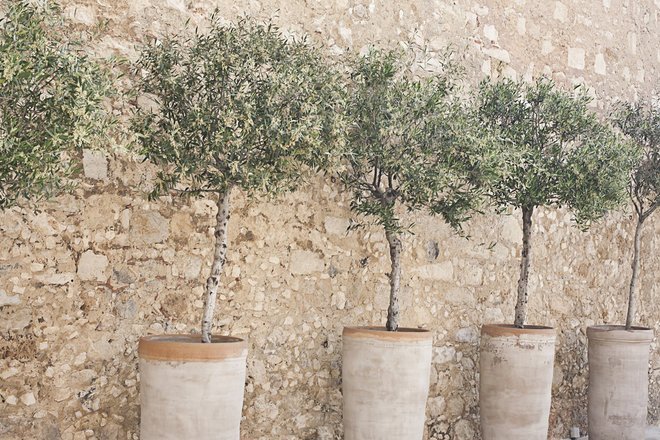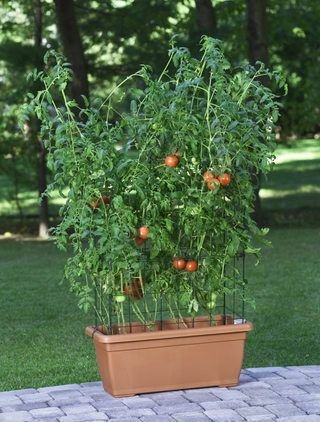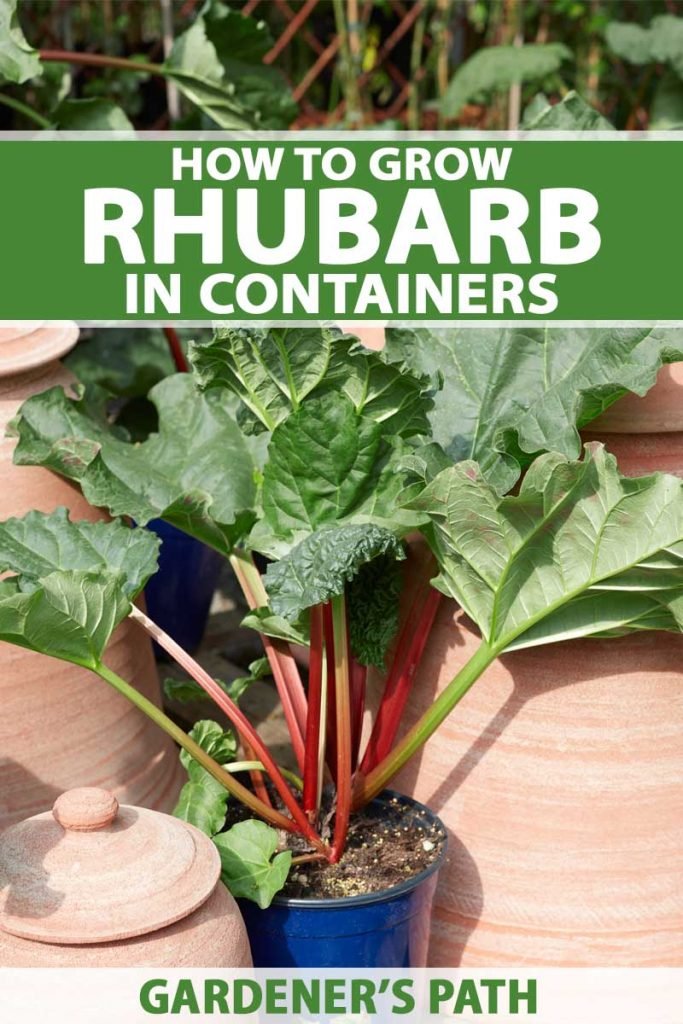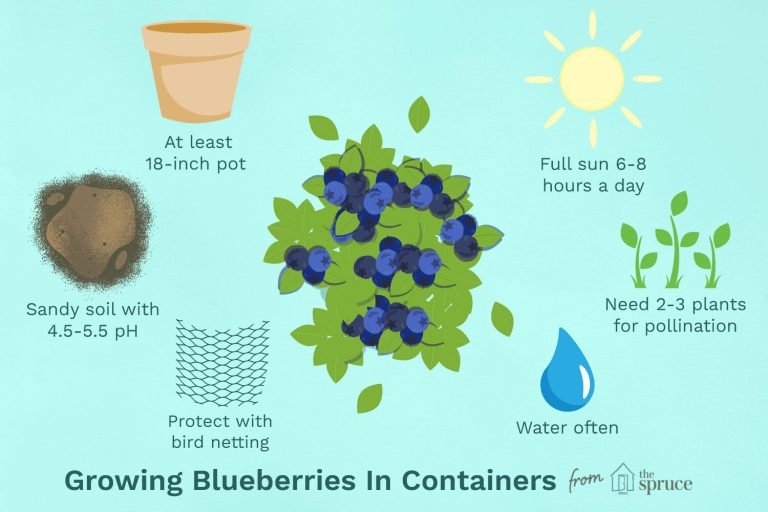how to grow an olive tree in a pot – [Beginners Guide]
If you’re looking for a fun and rewarding way to grow your own produce at home, then growing an olive tree in a pot might be just the thing for you! Not only are olive trees beautiful and aromatic, but they also produce a delicious fruit that can be used in cooking or eaten straight off the tree. And the best part? You don’t need a large garden or even a yard to do it!
As someone who has grown olive trees in pots for several years now, I can tell you firsthand that it’s a great idea. Not only does it allow you to enjoy the benefits of having an olive tree without having to worry about the space requirements of a full-sized tree, but it also makes it possible to move the tree around and protect it from extreme weather conditions. Plus, olive trees in pots can be grown both indoors and outdoors, depending on your preferences and climate.
In this guide, we’ll go over everything you need to know to successfully grow an olive tree in a pot, from selecting the right variety and pot size to caring for your tree and harvesting the olives. We’ll also discuss some common problems you might encounter and how to troubleshoot them. With a little bit of patience, planning, and care, you can enjoy a thriving olive tree that adds beauty and flavor to your home. So, let’s get started!
Pot or container selection
If you’re looking to grow an olive tree in a pot, the right container can make all the difference. The size and construction of the pot are both important factors to consider for optimal growth and health of your tree.
When it comes to size, you’ll want to choose a pot that is large enough to accommodate the size of your olive tree. As a general rule, a pot that is at least 24 inches (60 cm) in diameter and 24 inches (60 cm) deep is recommended. This will give your tree enough room for its roots to spread and grow, which is essential for a healthy and productive tree.
In terms of construction, there are a few key things to keep in mind. First, you’ll want to choose a pot made of a durable material that can withstand the elements, such as ceramic or fiberglass. Avoid pots made of wood or metal, as they may rot or leach chemicals into the soil.
Second, ensure that the pot has drainage holes in the bottom to allow excess water to drain out. Olive trees don’t like sitting in water, so good drainage is critical. If your pot doesn’t have drainage holes, you can drill some yourself or add a layer of rocks or gravel to the bottom of the pot to help with drainage.
Finally, consider the style of your pot. You can choose a decorative design or a more utilitarian style, depending on your preference. Just be sure that the pot is functional and large enough for your olive tree.
Overall, choosing the right pot is essential for growing a healthy and productive olive tree in a container. By selecting a pot that is the right size and construction, you can provide your tree with the optimal conditions it needs to thrive.
Make suitable soil mix
When it comes to growing an olive tree in a pot, selecting the right soil mix is also crucial for its growth and development. Olive trees need well-draining soil that is rich in nutrients, so it’s important to choose a soil mix that provides these conditions. Here are some things to consider when selecting soil for your olive tree:
Type
It’s best to use a high-quality potting mix that is specifically formulated for container-grown trees. These mixes are usually made from a combination of peat moss, perlite, vermiculite, and other organic materials, and are designed to provide the right balance of nutrients and drainage for your tree. Avoid using garden soil or topsoil, as these types of soil may not have the right composition for potted trees and can cause drainage problems.
Mixture
In addition to using a high-quality potting mix, you may also want to consider adding some amendments to your soil to give your olive tree a boost. Some options include:
- Compost: Adding compost to your soil can help improve its structure, drainage, and nutrient content.
- Fertilizers: You can use slow-release fertilizers or organic fertilizers, such as bone meal or fish emulsion, to provide additional nutrients for your tree. Be sure to follow the manufacturer’s instructions for application rates.
- pH adjusters: Olive trees prefer a slightly acidic to neutral soil pH (between 6.0 and 7.5). You can use sulfur or aluminum sulfate to lower the pH of your soil, or lime to raise it.
By choosing the right soil mix and adding the right amendments, you can give your olive tree the best chance of success and optimal growth in a pot. It’s important to note that olive trees prefer well-draining soil, so make sure the pot you choose has adequate drainage holes to allow excess water to escape.
How to plant the an olive tree?
Sure, here is a step-by-step guide for planting an olive tree in a pot at home:
Step 1: Choose the right pot
Select a pot that is large enough to accommodate the root system of your olive tree. A pot with a diameter of at least 16-20 inches and a depth of at least 20 inches is a good size for most olive tree varieties. Make sure the pot has drainage holes to allow excess water to drain away from the roots.
Step 2: Prepare the soil mix
Olive trees prefer well-draining soil that is slightly alkaline with a pH of around 7.0. To create the right soil mix, combine equal parts of potting soil, sand, and perlite. You can also add a small amount of dolomite lime to the soil mix to help raise the pH level.
Step 3: Plant the olive tree
Fill the pot with the soil mix up to 2 inches below the rim of the pot. Carefully remove the olive tree from its container and loosen any tightly wound roots. Place the olive tree in the center of the pot, making sure that the root ball is level with the soil surface.
Fill in around the root ball with the soil mix, gently tamping it down to remove any air pockets. Water the olive tree well to help settle the soil around the roots.
Step 4: Add support (optional)
Olive trees generally do not require support, but if your tree is tall or top-heavy, you can insert a stake into the pot and tie the trunk to the stake for support. Be sure to insert the stake when you plant the tree to avoid damaging the roots later on.
Step 5: Water and fertilize
Water the olive tree deeply once or twice a week, depending on the weather and the size of the pot. Allow the soil to dry out slightly between waterings to avoid overwatering.
During the growing season (spring and summer), fertilize the olive tree every two weeks with a balanced fertilizer specifically formulated for citrus and fruit trees. Follow the instructions on the fertilizer package for the recommended amount and frequency.
Step 6: Provide adequate sunlight
Olive trees require full sunlight to grow and produce fruit. Place the pot in a sunny spot, such as a south-facing window or a sunny patio.
With the right care and attention, your olive tree will thrive in its pot and may even produce a small harvest of olives.
How to care for an olive tree?
Growing an olive tree in a pot at home can be a rewarding experience. To ensure that your olive tree grows optimally, here are some key care tips to follow:
Watering Requirement
Olive trees need to be watered regularly, but they don’t like to sit in overly wet soil. As a general rule, water your olive tree deeply once or twice a week during the growing season (spring and summer), and reduce watering in the dormant season (fall and winter). Check the soil moisture level by sticking your finger about an inch into the soil. If it feels dry at that depth, it’s time to water. Be sure to water the soil directly rather than the foliage to prevent disease.
Fertilizer Requirement
Olive trees are not heavy feeders, but they can benefit from occasional fertilization to maintain healthy growth. Use a balanced fertilizer, such as a 10-10-10 formula, according to the package directions. Alternatively, you can use a slow-release fertilizer or compost to provide a steady supply of nutrients over time. Avoid overfertilizing, as this can lead to excessive foliage growth at the expense of fruit production.
Sunlight Needs
Olive trees require plenty of sunlight to thrive. Choose a spot in your garden or patio that gets at least 6 hours of direct sunlight per day. If you don’t have a sunny spot outdoors, you can also grow olive trees in a sunny window indoors using a grow light.
Pruning & Training
Pruning and training olive trees can help improve air circulation, promote fruiting, and maintain an attractive shape. To prune, remove any dead or damaged branches, and any suckers that emerge from the base of the tree. Olive trees can also be pruned to maintain a specific size or shape. To train your olive tree, use stakes or trellises to support the main trunk and branches. This will help prevent them from falling over and will make it easier to access the fruit.
Other Care
In addition to watering, fertilizing, and pruning, there are a few other things you can do to care for your olive tree:
- Repot the tree every two to three years to refresh the soil and provide room for growth.
- Mulch the soil around the tree to help retain moisture and suppress weeds.
- Protect the tree from extreme temperatures by bringing it indoors during periods of extreme cold or heat.
- Be on the lookout for pests and diseases. Common problems include spider mites, scale insects, and olive knot. If you notice any issues, take action immediately to prevent them from spreading.
By following these care tips, you can help ensure that your olive tree thrives and produces delicious fruit for years to come.
Common problems
Growing an olive tree in a pot at home can also pose some challenges. Here are some common problems that olive trees grown in pots may face:
Root-bound
When an olive tree outgrows its pot, the roots can become root-bound, meaning they have grown in a circle around the pot and are constricted, limiting their ability to absorb water and nutrients. To prevent this, repot your olive tree in a larger pot every two to three years.
Watering Issues
Over-watering or under-watering an olive tree can cause a range of issues. Over-watering can lead to root rot, while under-watering can cause leaves to wilt and drop. To avoid these problems, ensure that the soil is well-draining, and water your olive tree when the top inch of soil is dry to the touch.
Pests
Olive trees can be vulnerable to pests such as scale insects, spider mites, and mealybugs. These pests can cause leaf yellowing and curling, stunted growth, and fruit drop. To prevent pests, inspect your olive tree regularly, and use natural methods such as introducing beneficial insects or applying organic pest control solutions.
Diseases
Olive trees can be susceptible to diseases such as anthracnose, verticillium wilt, and root rot. These diseases can cause leaf drop, poor growth, and ultimately death of the tree. To prevent diseases, ensure that the soil is well-draining, avoid overhead watering, and maintain good hygiene by cleaning up fallen leaves and fruit.
Lack of Sunlight
Olive trees require full sun for optimal growth and fruit production. A lack of sunlight can cause poor growth, weak branches, and a lack of fruit. Ensure that your olive tree is located in a sunny spot and receives at least six hours of direct sunlight per day.
Nutrient Deficiencies
Olive trees require a balanced fertilization program to ensure healthy growth and fruit production. A lack of nutrients such as nitrogen, phosphorus, and potassium can cause poor growth, yellowing leaves, and a lack of fruit. To ensure your olive tree has the necessary nutrients, fertilize it regularly with a balanced fertilizer according to the package instructions.
In summary, growing an olive tree in a pot can be a rewarding experience, but it’s important to be aware of potential issues and take preventive measures to ensure the health and productivity of your tree.
Harvesting & storing homegrown an olive tree
When it comes to harvesting and storing homegrown olives, the process can be a bit more complicated than harvesting cherry tomatoes. Here are some general guidelines to follow:
When to Harvest Olives
Olive trees generally produce fruit in the fall, although the exact timing can vary depending on the climate and growing conditions. The olives are usually ready for harvest when they turn from green to a dark purple or black color. You can also check the firmness of the fruit by gently squeezing it – ripe olives should be firm but yield slightly when squeezed.
It’s important to note that not all olives will ripen at the same time, so you may need to harvest them in batches over the course of several weeks. If you have a large tree, you may want to invest in a special olive harvesting tool, which can make the process faster and more efficient.
How to Harvest Olives
The traditional method for harvesting olives is by hand, using special rakes or poles to shake the branches and loosen the fruit. However, this can be a labor-intensive process, especially if you have a large tree.
Another option is to lay a tarp or blanket under the tree and then use a long pole to gently tap the branches and knock the olives onto the tarp. Once you have harvested all of the olives, you’ll need to remove any leaves, stems, or debris before storing them.
Storing Olives
Once you have harvested your olives, you’ll need to cure them before they can be eaten. There are several methods for curing olives, including dry salt curing, brine curing, and water curing.
Once the olives have been cured, they can be stored in an airtight container in the refrigerator for several months. You can also freeze cured olives for longer-term storage – simply place them in a resealable freezer bag and store in the freezer for up to 6 months.
In general, it’s important to handle olives gently and avoid bruising or damaging the fruit, as this can cause it to spoil more quickly. With proper care and storage, your homegrown olives should be a delicious addition to your pantry.
Growing an olive tree in container – Conclusion
Congratulations on finishing this guide on how to grow an olive tree in a pot! You now have a solid understanding of how to choose the right pot and soil, plant and care for your olive tree, and identify and troubleshoot common problems that may arise.
Growing your own olive tree at home can be a fulfilling experience, and it’s a great way to have fresh, homegrown olives. With the right tools and knowledge, you can successfully grow an olive tree in a pot, even if you don’t have a big garden or outdoor space.
So, what are you waiting for? Give it a try! Follow the steps outlined in this guide, and enjoy the benefits of growing your own homegrown olives. With a little bit of patience and care, you can have a thriving olive tree right in your own home.








